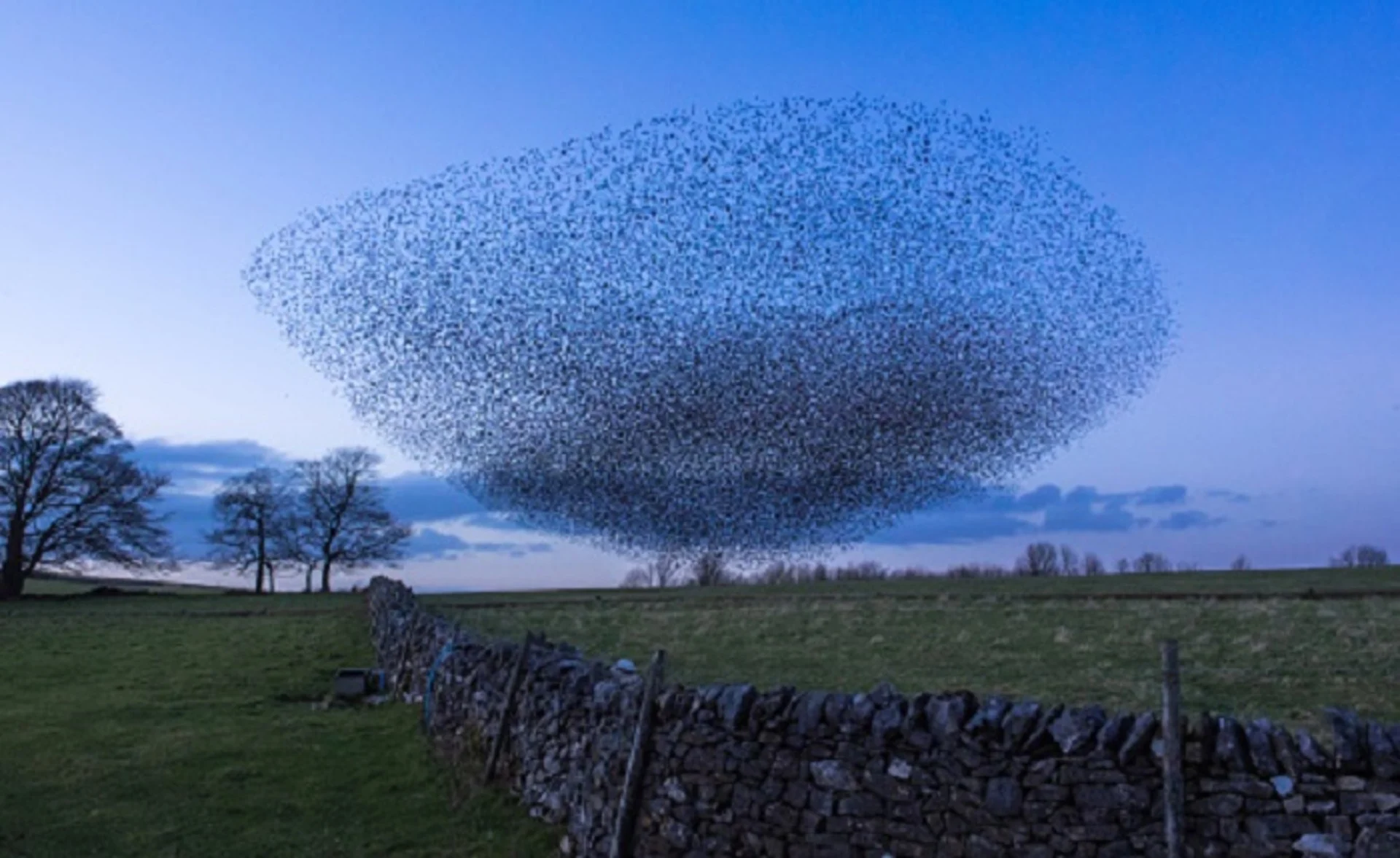
It isn't ESP: Learn how starlings communicate to form spectacular murmurations
Witness the mesmerizing movements of starling murmurations.
It's a common scene in Canadian skies, especially during the winter months: Thousands, sometimes hundreds of thousands, of tiny birds flying in a close-knit group, changing direction in unison, seemingly without warning.
What you're witnessing is a starling bird murmuration. According to former The Weather Network host and weather expert, Chris St. Clair, it was once thought the birds used ESP or telepathy to coordinate their swift movements, but science has come a long way since then.
Thanks to computer modelling, we now know each starling in a group mimics the motions of the seven birds it is closest two, allowing the murmuration to create gorgeous, far-reaching patterns that stretch across the sky.
RELATED: The birds and the breeze — looking to birds to observe the weather
VIDEO: SPECTACULAR STARLING FORMATIONS
BEST TIMES TO SPOT A MURMURATION
Murmurations are a fall and winter activity. You won't see them during their breeding seasons, which occur in spring and summer, Stuart A. Mackenzie, director of migration ecology at Bird Studies Canada, told Cottage Life.
You'll usually spot them at dusk when the birds are getting ready to settle for the night.
There are a few reasons why starlings form murmurations. For starters, there's safety in numbers, and banding together makes it easier to evade predators. Experts also believe the birds stick close together at night to keep warm and to share information about the feeding spots they found during the day.
WATCH | Skies darken in Canada as migrating snow geese find a place to rest
Thumbnail image courtesy: Getty Images.











